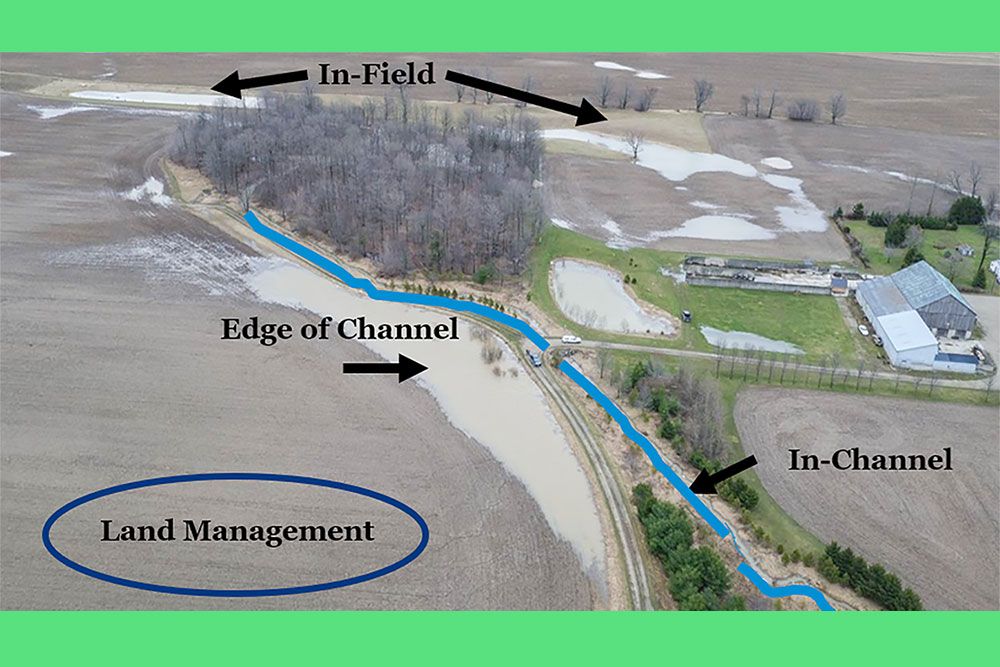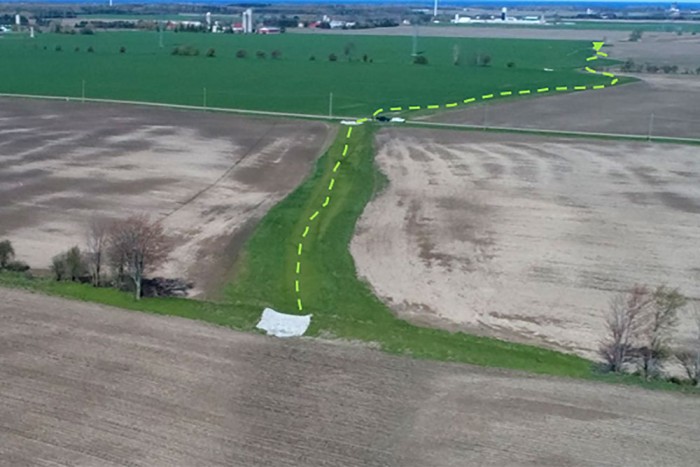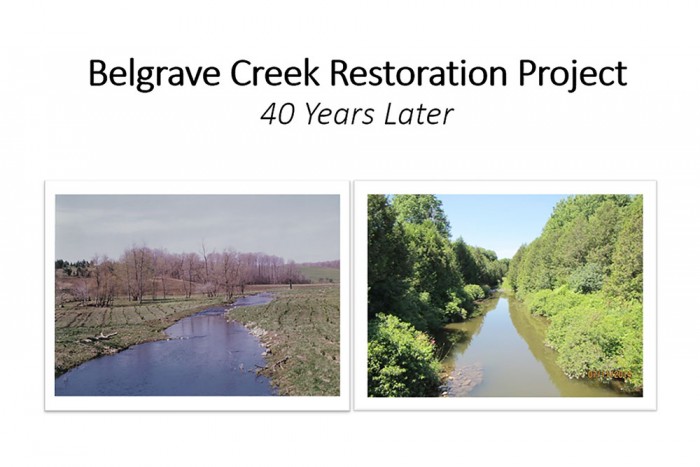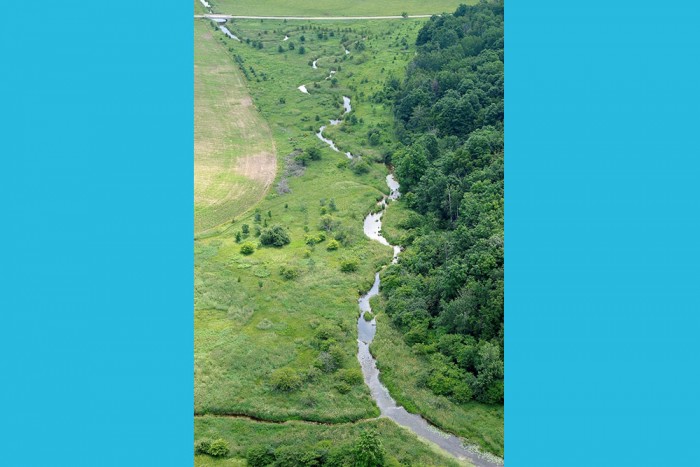Rural Green Infrastructure

What forms can Rural Green Infrastructure take throughout the landscape of Lake Huron’s southeast shore?
By Ben Van Dieten, Stewardship Projects Lead, Maitland Valley Conservation Authority
Rural Green Infrastructure (RGI) is a series of methods, structures and practices that can help reduce stormwater impacts and build resiliency across rural landscapes. To create a more resilient landscape means to create one that can better absorb the impacts of a changing climate.
Many RGI features exist naturally within a landscape while others can be enhanced or purposively built. RGI can be categorized spatially according to its location within a landscape, such as in-field; edge-of-channel; and in-channel. Maitland Conservation is excited to be working with landowners across the Maitland watershed to adopt and implement RGI practices.
In-field RGI features can include structures such as Water and Sediment Control Basins (WASCoBs) and Grassed Waterways. These structures are generally built within working fields and help to control overland runoff by directing surface water to more stable pathways. For WASCoBs, this means placing them in a location with significant overland runoff; usually in a ‘low-run’ where gullies are beginning to form. The WASCoB intercepts the overland runoff and slowly directs it underground into a buried tile drainage system. Alternatively, a grassed waterway involves reshaping and reseeding that ‘low-run’ in the field to become a permanent vegetated flow path. Overland runoff will still happen; but it will flow through a vegetated pathway as opposed to a working field (and avoid nutrient runoff and soil erosion as a result).
Edge-of-channel (or edge-of-field) RGI features are constructed at the intersection between working fields and watercourses (drains; creeks; watercourses; etc.). This is an important location within the landscape, as it offers a chance to treat or filter runoff before it enters a watercourse. Edge-of-channel features can include things like trees along drains and constructed wetlands. The form and function of these features are highly dependent on the topography/landscape. At the most basic level, trees and shrubs along drains will stabilize banks, provide habitat, and intercept and filter overland runoff as it flows through to the watercourse. Constructed wetlands work by directing runoff into a controlled area where it can be slowly treated before it flows into the watercourse.
In-channel RGI features occur within the channel of a watercourse (drain; creek; river; etc.). These features can help maintain the stability of the drain and improve aquatic habitat, as well as reduce peak flows and future maintenance needs (e.g., cleanouts). These can range from ‘natural channel design’ features to more drainage-orientated features. Some examples of natural channel design would be maintaining meanders in a drain or adding riffles and pools to improve aquatic habitat.
Alternatively, more drainage-orientated features would include sediment traps or alternative drain designs that reduce sediment losses.
There are many ways to understand RGI depending on which ‘lens’ one is using. This article has provided a guide on understanding RGI spatially. Lastly, it is important to understand that land management is also a critical piece to resilient landscapes. The ‘first step’ of in-field resiliency starts with reducing tillage; diversifying crop rotations; and planting cover crops where possible. Each of the features and concepts described in this article are just one ‘piece of the puzzle’ to creating a more resilient rural landscape. #PieceofthePuzzle
For more information, contact Ben Van Dieten at 519-335-3557, extension 245 or bvandieten@mvca.on.ca.

Figure 1. Types of Rural Green Infrastructure.

Figure 2. A Series of Grassed Waterways and Water and Sediment Control Basins or WASCoBs.

Figure 3. Belgrave Creek Restoration Project 40 Years Later.

Figure 4. Meandering Natural Channel.
